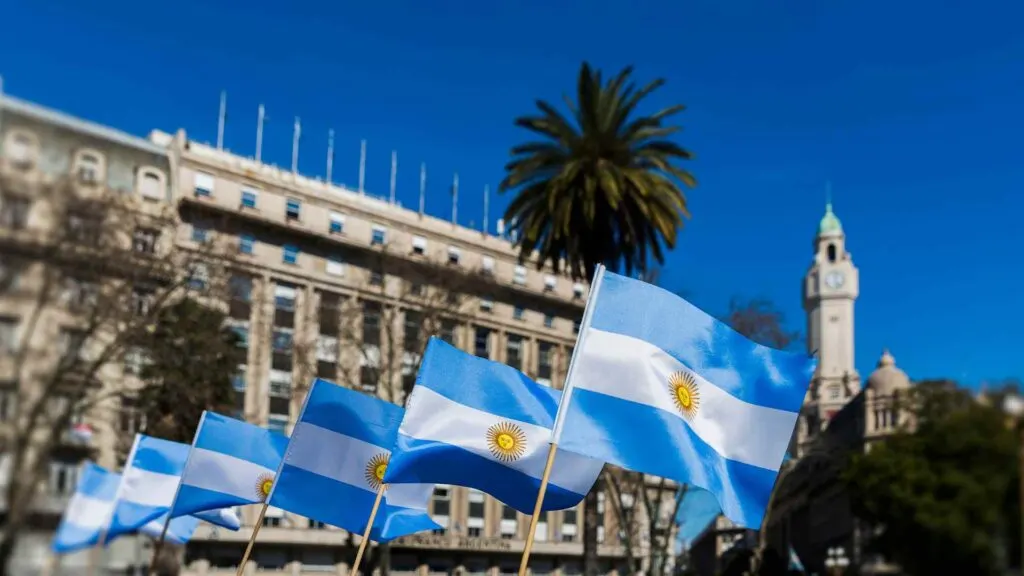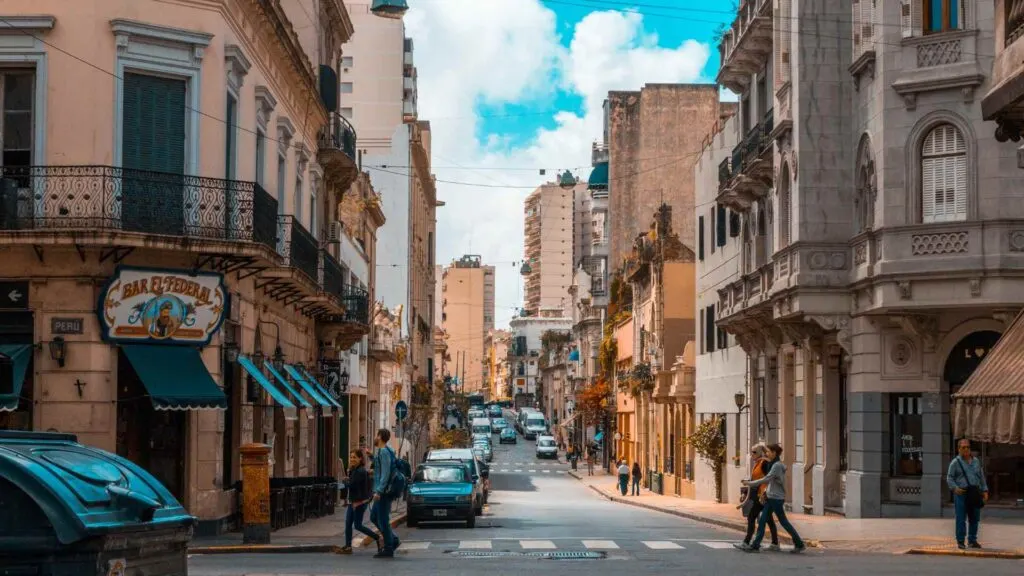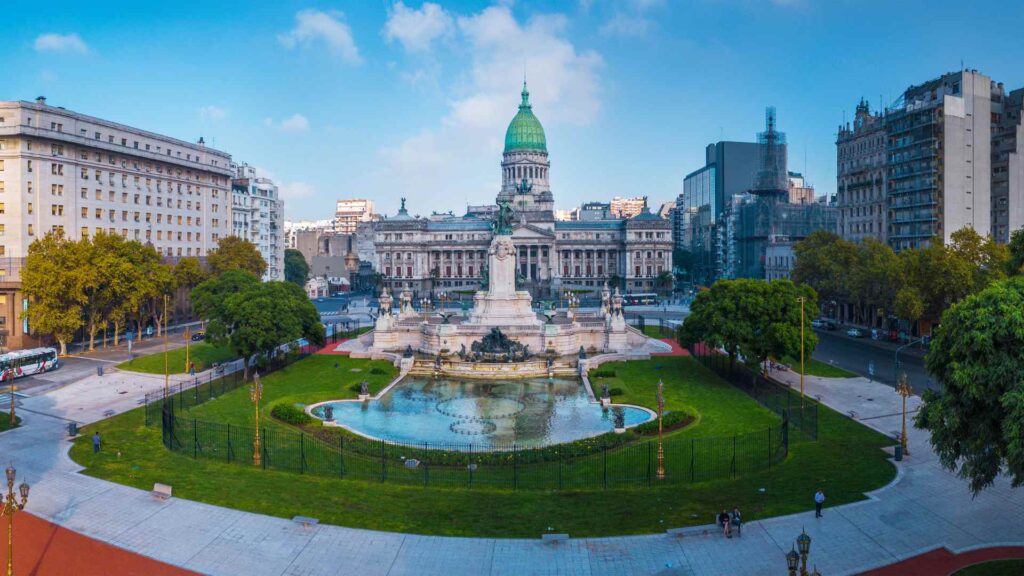Argentina is a country brimming with vibrant culture, stunning landscapes, and intriguing history.
Known for tango, fútbol, and mouth-watering cuisine, Argentina also holds many surprising secrets. Dive into this ultimate guide to uncover 145 fun facts about Argentina that showcase its uniqueness and charm.
Argentina’s Culture and Traditions
- Argentina is the birthplace of tango, a dramatic and passionate dance that emerged in Buenos Aires in the late 19th century.
- The Argentine national drink is mate, a caffeine-rich tea that locals share in a communal, social way.
- Argentina celebrates its independence every July 9th, with festivities, parades, and traditional dishes.
- The quinceañera is a traditional 15th-birthday celebration for Argentine girls, marking their transition to adulthood.
- Argentina hosts some of the world’s largest festivals, like the Carnaval de Gualeguaychú and the Fiesta Nacional de la Vendimia (Grape Harvest Festival).
- In Argentina, family values are very strong, and family gatherings are central to Argentine social life.
- Argentine barbecue, or asado, is not just a meal—it’s an essential social ritual with its own customs and techniques.
- The country has a rich literary tradition, with authors like Jorge Luis Borges and Julio Cortázar gaining international acclaim.
- Soccer (fútbol) is almost a religion in Argentina, with fans passionately supporting local teams, especially during the Superclásico match between Boca Juniors and River Plate.
- The Argentine flag was created in 1812 and features light blue and white with a golden sun.
- The siesta (afternoon nap) is common in smaller towns, where businesses often close for a few hours in the early afternoon.
- Many Argentines identify with European roots, especially Italian and Spanish, reflecting in the language, culture, and food.
- Argentine Spanish is unique, incorporating Lunfardo, a slang with roots in Italian, Spanish, and other languages.
- Argentina is known for its vibrant art scene, with murals and street art adorning the neighborhoods of Buenos Aires.
- National Pride Day, celebrated on June 20, honors Manuel Belgrano, who led Argentina’s fight for independence.

Geography and Natural Wonders of Argentina
- Argentina is home to Aconcagua, the tallest mountain in the Americas, standing at 6,959 meters (22,831 feet).
- The Iguazú Falls, on the border of Argentina and Brazil, is one of the largest waterfall systems in the world.
- The country spans over 1 million square miles, making it the eighth largest in the world.
- The Pampas is Argentina’s vast fertile lowlands, ideal for farming and cattle ranching.
- Argentina has diverse climates, from subtropical in the north to subpolar in the far south.
- The Perito Moreno Glacier, one of the world’s few advancing glaciers, is a popular tourist destination in Patagonia.
- Patagonia, in southern Argentina, offers unique landscapes with glaciers, mountains, and incredible wildlife.
- The country’s Lake District is known for its stunning glacial lakes and charming Swiss-style towns like Bariloche.
- The Valdes Peninsula, a UNESCO World Heritage site, is known for its rich marine life, including whales, seals, and penguins.
- Salinas Grandes, a massive salt flat in northern Argentina, looks like a surreal white desert.
- The Quebrada de Humahuaca in Jujuy is a colorful canyon with stunning mountain landscapes.
- Ushuaia, in Tierra del Fuego, is the world’s southernmost city, earning it the nickname “End of the World.”
- Argentina’s Andean mountains are home to several high-altitude vineyards, producing unique wines.
- The Paraná River is one of South America’s longest rivers, crucial for trade and transportation.
- The Pampas region is famous for gauchos (Argentine cowboys), who play a crucial role in rural life.

Argentina’s Unique Wildlife
- Argentina is home to the Andean condor, one of the world’s largest flying birds.
- The Patagonian Mara, a large rodent that looks like a rabbit, is unique to Argentina’s southern regions.
- Argentina has three native species of flamingos found in its high-altitude lakes.
- The yaguareté, or jaguar, is the largest wild cat in South America, though endangered in Argentina.
- Penguins, especially Magellanic and Gentoo species, are common along Argentina’s southern coasts.
- The country’s wetlands, like the Iberá Wetlands, are a habitat for capybaras, anaconda, and marsh deer.
- The guanaco, a wild relative of the llama, roams freely in the Andean regions and Patagonian steppes.
- Argentina’s coasts are home to the southern right whale, especially in the Valdes Peninsula.
- The Vizcacha, a rodent that resembles a rabbit, is native to Argentina’s plains and mountainous areas.
- The armadillo, known locally as the mulita, is a common sight across Argentina’s countryside.
- The Pampas cat, a small wildcat, is native to the grasslands and mountainous regions.
- The Humboldt penguin, a rare species, nests along Argentina’s rocky coastlines.
- The rhea, a large flightless bird similar to an ostrich, inhabits the Pampas and Patagonia.
- The giant otter, found in the northeast, is the largest otter species and a skilled hunter.
- The pink fairy armadillo, the smallest armadillo in the world, is found in central Argentina.
Famous People from Argentina
- Lionel Messi, one of the world’s greatest soccer players, hails from Rosario, Argentina.
- Eva Perón, or “Evita,” is a beloved political figure and First Lady known for her work in social justice.
- Jorge Luis Borges, one of the most influential authors, introduced Argentine literature to the world.
- Pope Francis, born Jorge Bergoglio, is the first pope from the Americas and hails from Buenos Aires.
- Che Guevara, the revolutionary, was born in Rosario, Argentina, and became a global symbol of rebellion.
- Astor Piazzolla revolutionized tango music by blending classical and jazz elements.
- Gabriela Sabatini, an Argentine tennis star, won numerous titles and remains a national hero.
- Carlos Gardel is known as the father of tango, making the genre globally recognized.
- Mercedes Sosa, known as “La Negra,” was a renowned folk singer with a powerful voice for social change.
- Manu Ginóbili, a basketball legend, is one of the few Argentine players to succeed in the NBA.
- Julio Cortázar, an Argentine novelist and short-story writer, is celebrated for his innovative writing style.
- Juan Manuel Fangio, one of the greatest Formula One drivers, was a five-time world champion.
- Tita Merello, an actress and tango singer, remains an icon in Argentine cinema and music.
- Adolfo Pérez Esquivel, an Argentine artist and activist, won the Nobel Peace Prize in 1980.
- Daniel Barenboim, a world-famous conductor and pianist, is recognized for his contributions to classical music.

Argentine Cuisine and Food Culture
- Argentina is famous for its beef, with asado (barbecue) being a central part of its culinary culture.
- Empanadas, pastries filled with meat or cheese, are a popular snack across the country.
- Dulce de leche, a sweet milk-based spread, is an Argentine staple enjoyed on toast or in desserts.
- Chimichurri, a tangy sauce made with parsley, garlic, and vinegar, is a classic condiment for meats.
- Provoleta, a grilled provolone cheese, is a favorite appetizer at barbecues.
- Locro, a thick stew with corn, beans, and meat, is traditionally eaten on national holidays.
- Milanesa, a breaded meat cutlet, is a common Argentine comfort food.
- Argentine pizza is unique, with a thick crust and lots of cheese, often topped with ham and green olives.
- Fainá, a chickpea flour flatbread, is usually eaten with pizza.
- Medialunas, sweet croissant-like pastries, are a popular breakfast item.
- Malbec wine, especially from Mendoza, is Argentina’s most famous wine variety.
- Alfajores, sandwich cookies filled with dulce de leche, are a favorite snack and gift item.
- Matambre a la pizza, grilled flank steak with pizza toppings, is a delicious Argentine creation.
- Carbonada, a beef stew with corn and potatoes, is cooked inside a pumpkin in some regions.
- Argentina’s ice cream, influenced by Italian gelato, is renowned for its creamy texture and unique flavors.
Bonus Facts About Argentina
- Argentina is the third most populous country in South America.
- Buenos Aires has the highest concentration of theaters in the world.
- The Obelisk in Buenos Aires was built in 1936 to commemorate the city’s 400th anniversary.
- Argentina became the first country in Latin America to legalize same-sex marriage in 2010.
- Iguazú Falls has over 270 waterfalls, spanning nearly 1.7 miles.
- Argentina has produced two FIFA World Cup titles in 1978 and 1986.
- The tango was initially considered scandalous due to its close dancing style.
- The country has a unique hand gesture language, especially in Buenos Aires.
- The name “Argentina” comes from the Latin word “argentum,” meaning silver.
- Buenos Aires is known as the “Paris of South America” due to its architecture.
- Lionel Messi won his first Ballon d’Or in 2009 and has since become an icon.
- The Argentine peso has fluctuated greatly over the years due to economic crises.
- Buenos Aires has a large population of psychoanalysts, earning it the title “Capital of Psychoanalysis.”
- In 1930, Argentina experienced its first military coup.
- Evita Perón’s life inspired a famous musical and film titled Evita.
- Many Argentine cities have European-style architecture due to immigration influences.
- Gnocchi is traditionally eaten on the 29th of each month in Argentina.
- Argentina has over 30 national parks protecting diverse ecosystems.
- Bariloche is famous for its chocolate, especially during the Easter season.
- The country’s Independence Day is celebrated with locro and empanadas.
- There are over 3,000 species of birds found in Argentina.
- Argentina’s women’s rights movement is one of the most progressive in Latin America.
- The Casa Rosada (Pink House) is Argentina’s presidential palace.
- The “Yerba Mate Route” is a tourist path celebrating mate production.
- Buenos Aires has over 300 bookshops, the most per capita in the world.
